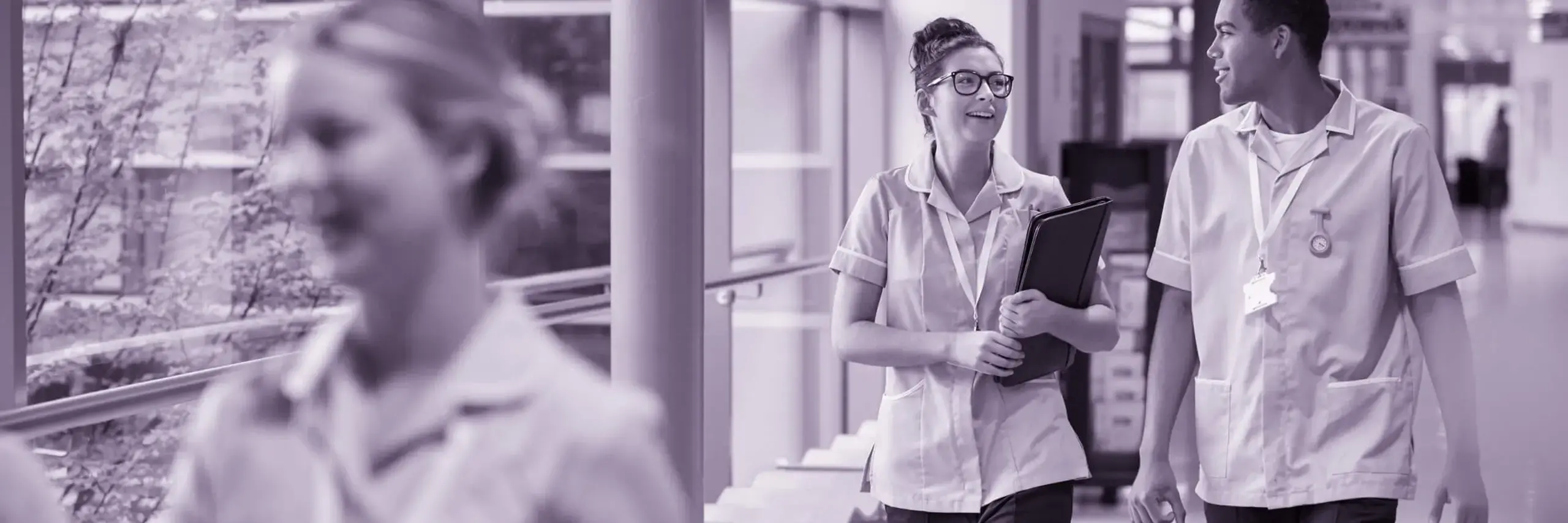Main content
The patient voice in regulation during Covid-19 and beyond
20 Sep 2021
Despite the hardship and loss experienced by many during 2020/21, there has also been focus on some side-effects of the Covid-19 pandemic that have resulted in encouraging both agility and innovation in the health service in exceptionally challenging circumstances. Alongside this, the commitment of front-line health professionals working in incredibly challenging conditions during a time of national crisis has been clear for all to see.
However, it has also become apparent that the effect on many patients during this time has been more negative and that emergency action taken to protect health service capacity in the face of the pandemic has had a significant knock-on effect on many users of health and care.
The pandemic's impact on patients
A report last year from the Patients Association described the impact that emergency measures had had on patients, many of whom had difficulty accessing services. Many felt their long-term relationship with the NHS has been damaged by their experience which left them feeling unsupported and alone. The report stated: ‘There is a risk during crisis situations that the voice and experience of patients, including their relationship with staff, gets lost in the need to get things done; there is some evidence from this survey that this has happened.’
In addition, for those with severe or long-term health conditions the experience of the pandemic has been very different to that of many of their friends, relatives and neighbours, with many feeling isolated or unheard.
Our Covid Voices, run by National Voices, came about due to a feeling that the voices of those living with ongoing health conditions, ill health or disability were not being properly taken into account. The project gathered the experiences of people in the UK during the first national lockdown and provides some powerful and moving examples of the experience of individuals during the pandemic with many struggling to access the support and information they needed.
Patient voice in policy-making
Slightly harder to quantify is the sense that the patient voice in policy-making has also been a casualty of Covid-19. For the health and care professional regulators the first wave of the pandemic meant doing things at pace – creating emergency registers of professionals, holding fitness to practise hearings virtually, issuing guidance for registrants on whether they could continue to practise and any safeguards required.
Maintaining public confidence is a key element of the overarching objective of public protection that the regulators and the Authority share. Understanding the views of patients and the public is therefore a key constituent of regulating effectively and with legitimacy. Whilst it is inevitable that patient and public engagement has been affected by the limitations imposed by the pandemic, it is equally important that regulators strive to ensure that this short-term impact doesn’t become a longer-term gap in the information they rely on to shape their regulatory approach.
Although the vaccine has provided a path back to some kind of normality over the past few months, it is clear that we are not out of the woods yet. The uncertainty over whether further restrictions may yet be needed arguably creates an even greater challenge for organisations in seeking to hear from patients and the public.
All organisations will need to continue to employ creative thinking to ensure the patient voice can be heard during this period through use of technology, innovative research methods and a range of consultation processes. Beyond Covid (if there is ever such a time) there may be learnings for regulators about ensuring the patient voice is heard in regulation.
Research aimed at understanding experience of fitness to practise witnesses
A new research project ‘Witness to Harm’, led by Professor Louise Wallace at the Open University aims to understand the experience of people who are witnesses within the fitness to practise process. It will look at the impact of being a witness in investigations and fitness to practise hearings on the patient or service user, family and colleagues, as well as at what support they receive from the regulator and what support they would like to receive. This project should provide a valuable opportunity to hear from those most affected by regulation and use this to make improvements to the process.
Alongside this, Government proposals to reform professional regulation are likely to mean fewer public fitness to practise panel hearings and more cases concluded by agreement with the registrant in private.
There are many problems with the current system and research demonstrates that the public are broadly supportive of moves away from expensive, lengthy and confrontational panel hearings. The Authority responded to the Government consultation earlier this year and is broadly supportive of proposals. However, we have also called for the additional flexibility given to regulators to be matched with proper accountability. We are currently awaiting the Government response to the consultation before changes are rolled out with the General Medical Council first in line for the new powers.
Capturing the patient voice post-reform
However, with a reduction in public hearings, it will become even more important to find ways to ensure the patient voice is heard. Whilst hearings can be painful and distressing, they do at least provide a defined opportunity for patients who have been on the receiving end of misconduct to have their say. Without this, and with regulators being given the flexibility to make and amend their own rules, opportunities for patients and the public to be heard may become more limited or at the very least vary widely across regulators.
With this in mind, we will be carrying out further work alongside patient organisations, patients, service users and regulators to define how and when the patient voice should be captured within professional regulation. We are at the early stages of defining the scope of this work but intend to draw on learning from other sectors including criminal justice where the Victims’ Code seeks to uphold victims' rights and sets out the minimum standard that organisations must provide to victims of crime.
We know that much has been done within the sector already and that colleagues within the regulators recognise the importance of finding meaningful ways to get patient and public input when developing regulatory processes. We look forward to working with all of our stakeholders to ensure that this challenging period can be a catalyst for a new approach to ensuring the patient voice is heard in professional regulation.



